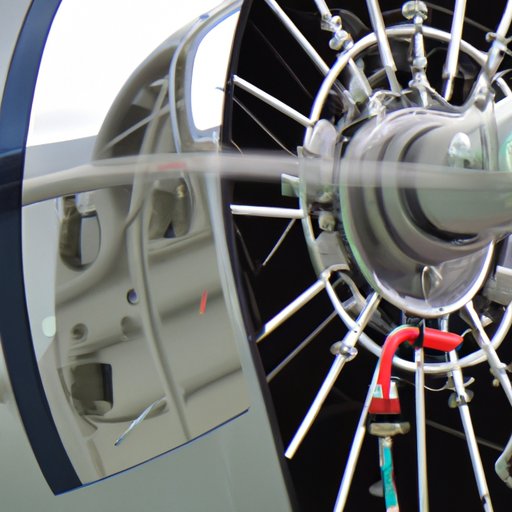Introduction
A helicopter is an aircraft that uses rotating wings called rotors to create lift, allowing it to fly in any direction. This type of aircraft has been used for decades for commercial and military applications and continues to be one of the most popular forms of air transportation. But how does a helicopter work? In this comprehensive guide, we will explore the mechanics behind helicopter flight and investigate the anatomy of a helicopter.
Exploring the Mechanics of Helicopter Flight
The key to understanding how a helicopter works is to understand the mechanics of its rotor system. The rotor is a set of blades attached to a central hub that spins around a vertical axis. As the rotor spins, air is pushed downwards, creating lift and thrust. This lift and thrust is what allows the helicopter to move in any direction.
In addition to the rotor system, there are other factors that contribute to the mechanics of helicopter flight. The angle of attack of the rotor blades affects the amount of lift generated by the rotor. The collective pitch of the blades determines the amount of thrust generated. Finally, the cyclic pitch of the blades determines the direction of the helicopter’s flight.
Examining the physics behind helicopter flight can help us to better understand how a helicopter works. The law of conservation of energy states that energy cannot be created or destroyed, only converted from one form to another. In the case of a helicopter, the energy of the spinning rotor is converted into lift and thrust.

Investigating the Anatomy of a Helicopter
The anatomy of a helicopter consists of several different components. The main components are the rotor, engine, and fuselage. The engine powers the rotor, which creates the lift and thrust necessary for flight. The fuselage contains the cockpit, where the pilot controls the aircraft, as well as the passenger compartment.
Helicopters typically have two types of engines: piston engines and turbine engines. Piston engines are generally more economical, but they are less powerful than turbine engines. Turbine engines are generally more powerful, but they are more expensive to maintain.
Understanding the design principles of helicopters is essential for appreciating how they work. Helicopters are designed to be aerodynamically efficient, meaning they are able to generate lift with minimal drag. They are also designed to be structurally sound, meaning they are able to withstand the forces generated by the rotor system.

Discovering the Benefits of Helicopter Travel
Using a helicopter for travel has many advantages over other forms of air transportation. The first advantage is safety. Helicopters are able to hover and land in areas that are inaccessible to other aircraft, making them ideal for rescue operations. They are also able to fly at lower altitudes than other aircraft, increasing their safety.
Another advantage of using a helicopter for travel is speed. Helicopters can reach speeds of up to 150 knots (173 mph), making them much faster than other forms of air transportation. Additionally, helicopters are able to take off and land vertically, eliminating the need for a runway.
Finally, helicopters are incredibly versatile. They can be used for a variety of purposes, including search and rescue, firefighting, and aerial photography. They can also be used to transport passengers and cargo in remote areas, making them ideal for transporting supplies and personnel in difficult terrain.
Conclusion
In conclusion, helicopters are an amazing form of air transportation. By understanding the mechanics of helicopter flight and investigating the anatomy of a helicopter, we can appreciate the complexity of these remarkable machines. Additionally, discovering the benefits of helicopter travel helps us to understand why they are such a popular choice for transportation.
The major points discussed in this article include the definitions and overviews of helicopters, the mechanics of helicopter flight, the anatomy of a helicopter, and the advantages of using helicopters for travel. We hope you found this article informative and helpful in understanding how a helicopter works.
(Note: Is this article not meeting your expectations? Do you have knowledge or insights to share? Unlock new opportunities and expand your reach by joining our authors team. Click Registration to join us and share your expertise with our readers.)
